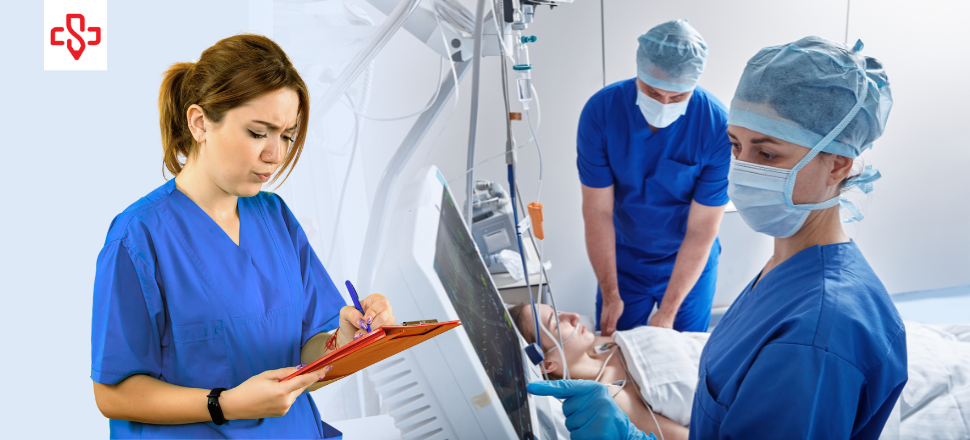Hospitals today are flooded with technology — from AI-powered triage to automated documentation tools. Yet, amid the monitors and machines, emergency medicine remains deeply human. It’s about reading expressions, interpreting silence, and catching subtle cues that no algorithm can see.
That’s why live medical scribes continue to hold their ground in one of the most high-tech environments in healthcare — the emergency department. In a world chasing automation, their human presence delivers something software simply can’t: understanding, adaptability, and empathy.
The Limits of Digital Documentation
AI and telescribing platforms promise faster, cheaper documentation, but emergency departments quickly learn their limitations.
- Noise Interference: ERs are chaotic. Background noise, overlapping voices, and medical equipment alarms confuse transcription tools.
- Context Gaps: Software can record words but not interpret meaning or urgency.
- Lack of Human Awareness: Machines don’t notice a physician’s expression, a nurse’s cue, or a patient’s change in condition.
In short, AI can hear — but it cannot see.
An emergency department scribe, on the other hand, doesn’t just capture data. They witness care, interpret context, and document the full clinical picture.
The Human Advantage in Real Time
The ER is unpredictable — no two shifts are the same. A patient arrives with chest pain, another with trauma, another in psychiatric crisis. Physicians pivot constantly, switching gears between life-saving interventions and detailed documentation.
According to the American Medical Association, physicians who work with medical scribes can cut their documentation time by nearly 50%, allowing them to dedicate significantly more time to direct patient care.
Live ER medical scribes stay right beside them, ensuring nothing gets lost in translation.
-
Contextual Understanding
When a physician changes a diagnosis midway through an evaluation, the scribe adjusts instantly. They grasp tone, urgency, and subtle shifts — keeping the record accurate.
-
Immediate Clarification
Need to confirm a dosage or timing? A live scribe can ask in real time, not hours later. That prevents errors and saves time.
-
Situational Awareness
During a code or trauma case, ED medical scribes record the flow of events — orders, interventions, and outcomes — without missing a beat.
The result? Documentation that mirrors reality, not just audio.
What Patients Notice (Even If They Don’t Know Why)
When a scribe is present, patients notice something different — their doctor isn’t typing. They’re talking, listening, explaining.
That’s the subtle, human effect live medical scribes bring:
- More eye contact and patient engagement.
- Fewer interruptions during critical discussions.
- Smoother, faster transitions between cases.
Patients might not know the scribe’s role, but they feel the change in attention and flow.
Empathy Can’t Be Automated
AI may learn language patterns, but it can’t recognize the emotion behind them. A live medical scribe does.
They know when to pause documentation during emotional moments — like delivering bad news — or when to step aside to maintain privacy. They read the room and adjust their actions accordingly.
That awareness is what makes them valuable members of the clinical team, not just recorders of it.
As one attending physician put it in Emergency Medicine Journal:
“My scribe knows when to speak, when to step back, and when to remind me of something important. No AI can match that kind of intuition.”
Why Providers Prefer Live Scribes Over Remote Models
For most ER physicians, the difference between working with a live scribe and a remote or AI model isn’t subtle — it’s profound.
| Aspect | Live ER Scribe | Remote/AI Documentation |
| Context | Sees and interprets provider and patient behavior | Captures only audio |
| Responsiveness | Instant clarification and updates | Delayed or asynchronous |
| Adaptability | Adjusts to changing cases and interruptions | Follows fixed input pattern |
| Emotional Awareness | Responds to patient and provider emotions | None |
| Accuracy | Real-time correction | Post-event editing required |
The more complex and fast-paced the environment, the wider this gap becomes.
Protecting Quality and Compliance
In emergency care, documentation isn’t just administrative — it’s legal and financial. Every chart becomes evidence of clinical reasoning, compliance with regulations, and justification for reimbursement.
EMR scribes protect both provider and hospital integrity by ensuring every order, diagnosis, and reassessment is captured precisely as it happens. EMR scribes play a crucial role in maintaining digital documentation accuracy and compliance.
When auditors review records, they find clarity — not confusion. That’s the human edge technology still struggles to replicate.
Provider Well-Being: The Other Human Factor
Physician burnout remains one of the most pressing issues in healthcare. Long hours, constant pressure, and endless charting create exhaustion that no AI upgrade can fix.
Live medical scribes play a quiet but powerful role in alleviating that burden.
- Providers finish shifts with charts complete.
- Work-life balance improves.
- Emotional fatigue decreases because focus stays on patient care — not paperwork.
That’s how human presence supports not just performance, but well-being.
The Future of ER Documentation: Tech-Assisted, Human-Led
AI and automation aren’t the enemy — they’re tools. But tools still need hands that understand nuance. The best emergency departments combine intelligent systems with live scribes who oversee, correct, and interpret what machines can’t.
That hybrid model — tech-assisted but human-led — is the future of accurate, empathetic documentation.
The more advanced healthcare becomes, the more it needs people who can think, adapt, and care.
The Human Advantage in a Nutshell
In a department where every decision can change a life, documentation isn’t about keystrokes — it’s about clarity, context, and compassion.
Live medical scribes bring all three. They capture what AI can’t see, understand what technology can’t interpret, and protect what automation too often forgets — the human context win.
Empower Your ED Teams With Live Scribing Support
When every second counts, your providers deserve uninterrupted focus. Scribe.ology’s live emergency department scribes combine accuracy, empathy, and speed — keeping your documentation flawless and your operations flowing. Ready to improve your documentation workflow? Request a free quote with Scribe.ology and discover how our live scribes can support your emergency department.



